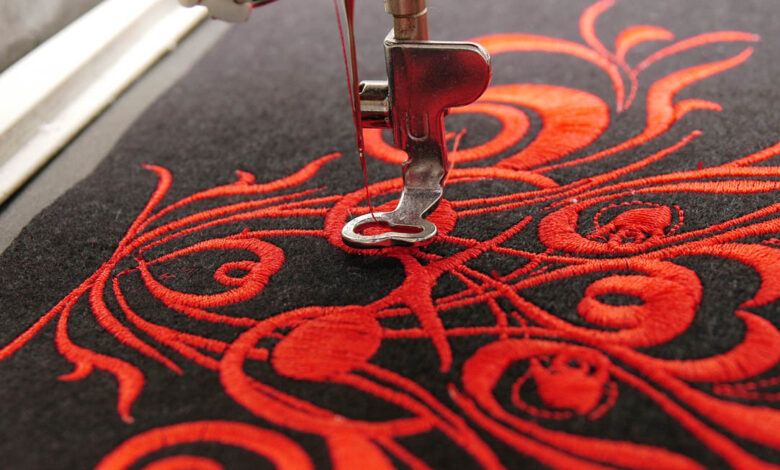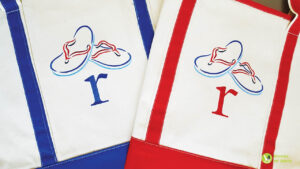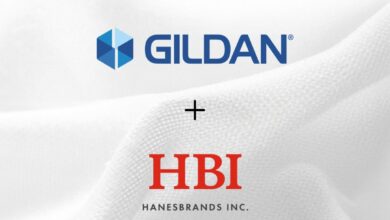
Adding embroidery to your screen printing business can be a great way to expand your apparel decoration services, increase your sales, and attract new customers. As you interact with your current customers, gauge their interest in embroidery services. Ask what specific products they might want, such as embroidered hats, golf shirts, dress shirts, outerwear, or bags. Use these insights to help you tailor your offers and focus on high-demand products as you develop your embroidery services.
There are several key points to consider as you evaluate the possibility of adding embroidery to your current operation:
Embroidery equipment requirements
Machine: Choose the right commercial embroidery machine. Start with a single-head, multi-needle machine. These are more affordable than multi-head machines, yet versatile enough to handle a wide range of designs and products. Every shop will benefit from a multi-needle, single-head embroidery machine. As you may be unclear about the kinds of orders and quantities of goods to which you will be adding embroidery, this is a safe bet as you develop your embroidery skills.
You can add more machines or upgrade to multi-head equipment as your demand grows. You can always contract out a job if you land an order that is larger than you want to run yourself. Commercial embroidery machines and digitizing software can be expensive, ranging from a few thousand to tens of thousands of dollars depending on the machine’s capabilities. Starting with a single head lets you asses the need for embroidery and develop the skills necessary while controlling your initial investment and risk.
Software: Digitizing software is needed to create and view the files that operate your embroidery machine. Some machines are sold with specific software programs, or you can choose a standalone software. With the software, you can create basic design files such as names or use stock designs for some orders. Consider outsourcing all the custom designs so that you can focus on the production side and develop the necessary skills to become an excellent embroiderer. Learning to digitize is a challenge and not a skill that is developed quickly.
Supplies: Threads, bobbins, needles, stabilizers (aka backings), hoops, and nippers are all necessary. You will want to track this inventory so that you do not come up short of the correct thread color or backing just as a job is scheduled on the machine.

Space requirements
Workspace: Make sure the space for your embroidery area is clean and away from your inks, screens, washouts, and other messy spaces. You will need a clean and cleared off flat surface at table or counter height for hooping garments. Embroidery threads, hoops, and even rolls of stabilizers can be stored vertically on pegboard so they do not take up precious floorspace.
Noise: Embroidery machines can be noisy. Keep that in mind as you carve out space for your embroidery services so that it is not disruptive to other aspects of your business.
Training & skill development
Machine operation: Learning how to create top-quality embroidery takes practice. While the basics of how to run the machine can be taught in a fairly short period, learning how to use this knowledge properly comes with experience. You have to learn how to “feel” when the thread tension is set correctly, as there is not a universal setting on the machine for it. Learning about the different kinds of fabrics and how to stabilize and hoop them correctly is also a hands-on and experience-based process. Learning how to operate the machine efficiently is the key to making it profitable, ultimately.
Digitizing: Watching good designs sew out is one of the best ways to learn the basics of good digitizing. The order in which the layers are stitched, the underlay that is built in to the design to stabilize it, and the way details are added are all crucial to an excellent finished product. Sending out designs to a professional digitizer will allow you to watch and learn while you develop your embroidery skills, and begin to develop an understanding of how good embroidery files are digitized. Many successful businesses never bring digitizing in-house, preferring to spend their time and effort running the equipment instead of creating designs on the computer.
Design considerations: Understanding the constraints of embroidery compared to screen printing is essential. Thread is a consistent thickness and a consistent color. It cannot be changed into something that it is not, unlike ink. Being able to look at a customer’s design and see how you will need to adapt it for ink and for thread yet still look like the same design is a skill that is developed with practice. Some designs might work for both screen printing and embroidery, while others won’t. Managing client expectations for what works well as an embroidered design is important, and mistakes in this area could result in returns or redo’s, eating into your profits.

Focus on quality
Standardize production: Develop a procedure for taking embroidery orders and for setting up embroidery jobs on the equipment. Keep track of the design files, design placement, thread colors, backings used, and any other relevant details. This will help reduce mistakes and ensure consistent quality as well as allow you to easily replicate an order at a future time.
Market & customer opportunities
Current customers: It is likely that a decent percentage of your existing customers are either interested in buying embroidered goods, or they are already buying embroidered goods from somewhere else.
Target markets: Certain markets are more inclined to order embroidered apparel and products, just as there are certain markets that prefer screen printing. “White collar” industries, such as banks, investment firms, insurance companies, car dealers, pharmaceutical companies, and “service industries,” such as restaurants, entertainment businesses, and medical institutions, including hospitals and research facilities, tend to prefer embroidered goods over screen printed goods.
Pricing
Pricing strategy: Pricing embroidery is different than pricing screen printing. The number of colors in a design usually does not affect the cost of embroidery. The metric for pricing embroidery is the number of stitches in the design, as the more stitches in the design, the longer it takes to sew out on the equipment.
Promotion

Existing customers: Present embroidery as an additional service every time existing customers place an order. If they order shirts, suggest some embroidered hats. If they order sweatshirts, maybe they would like to hear about embroidered golf shirts. If they order printed hats, maybe some embroidered beanies would be good in the colder months. The good news is that the majority of embroidered goods tend to be at a higher price point than goods that get screen printed. This provides a higher profit potential for every order to which embroidered goods are added.
Create package deals: Offer a special discount for the first time that a customer adds embroidered goods to a screen print order. It will help you to introduce this new service to your existing customers by email, on your website, on your social media, and in person.
Create & wear samples: Produce embroidered apparel for you and your staff to wear at work. It is a great way to get practice running the machine as you create things for yourself, your family, and your team. Having samples allows people to see the quality of the embroidery you produce.
Showcase your equipment: Watching a design appear in the hoop is fascinating, no matter if you have been running machines for years, or have never seen it before. Shoot short 30-second videos of the machine running, focusing on the hooped surface and the emerging design. Post these to your website and promote them on social media. Add a short clip to your email signature, or a QR code that leads to the video on your website.
Offering both screen printing and embroidery services makes your business a more attractive option for customers who want a variety of services under one roof. For example, a customer may want screen-printed T-shirts and embroidered hats or jackets for a unified look. When customers can rely on you for a wider range of services, they are less likely to seek out competitors. This helps build long-term relationships and increase customer loyalty, as they appreciate the convenience of working with a single trusted provider.
By adding embroidery to your existing screen printing business, you can diversify your product offerings, attract new types of customers, and create more growth opportunities for your business. The key is to integrate this new apparel decoration service in a way that aligns with your existing strengths and your customers’ needs.



